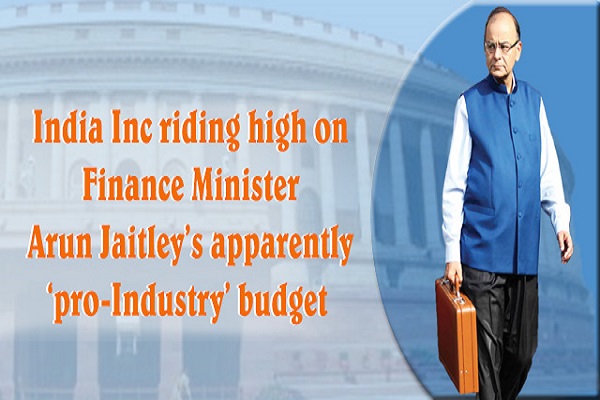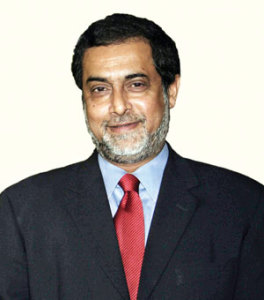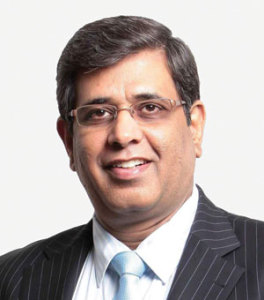
Riding high on Finance Minister Arun Jaitley’s apparently ‘pro-Industry’ budget, India Inc moves beyond the uncertainty of ‘will-it-won’tit?’ expecting that after a long spell of recession, better days could be just around
Ever since the Narendra Modi-led NDA Government took the reins of power in mid-2014 on the promise of heralding ‘Acche Din’, expectations of the business and corporate community have been running [sociallocker] sky high. More than anything else, ‘Acche Din’ or better times slogan gave a ray of hope that business and economy would soon be witnessing better growth digits and that start-ups, SMEs, large corporate and public companies would soon stand higher in the green zone. And, all this hinges on the people’s faith in the ‘performer’ tag generally attached to Prime Minister Modi, who always lived up to the expectations of the people of Gujarat during his successive stints as the Chief Minister of the State.
Having presented an interim budget in 2014, now government has proposed a full-scale budget. Businesses hope that the current financial year has more in store for them than the previous one — 2014-15, as then it was too early for the new NDA Government to implement all the initiatives it had talked about during the pre- and post-election days.

What the Budget has for ITeS, eGov?
Dwelling upon the Prime Minister’s ambitious Digital India programme, Finance Minister Arun Jaitley had said in his Budget speech that the trinity of JAM – Jan- Dhan, Aadhaar, Mobile and GST – are going to be the game-changing reforms in the Union Budget 2015.

“Jan-Dhan, Aadhaar, Mobile and GST will help the government implement direct benefits transfer (DBT) schemes in a leakage-proof manner,” he said.
“The announcement to introduce GST Bill by April 2016 is a welcome decision for the Indian corporate. Reduction in corporate tax from 30 per cent to 25 per cent over the next four years, cut in taxes on royalty and technical fee as well as re-assurance on retrospective taxation will complement the efforts of improving investor sentiment and making India the next business destination,” says Rodney Noonoo, CFO, Xerox India, reacting to the Budget proposals.
An overall sum of `2,510 crore has been set aside in the budget for 2015-16 under the head “Digital India Programme and Telecommunications and Electronic Industries”.
Jaitely also announced `1,000 crore for promotion of start-ups and entrepreneurs, particularly in the technology sector.
The Finance Minister also said the Postal Department would utilise the services of its vast network for the proposed Payment Bank, so that it can contribute to the Pradhan Mantri Jan Dhan Yojana (PMJDY).
“With a view to enhancing the scenario of eGovernance in India, post offices will function as payment banks to contribute to the Jan Dhan Yojana,” said FM.
The Budget also provided the muchneeded relief to domestic manufacturers of personal computers and tablets by addressing the issue of inverted duty structure suffered by the industry.
In this Budget, the IT industry was looking forward to the benefit of SAD exemption to be extended to all goods (including inputs, components and accessories as well as their parts and sub parts) when importimported for use in the manufacture of electronic items, and the government lived up to its expectation.
Similarly, in a move aimed at promoting the eGovernance concept, the Railway Budget 2015 has also announced various initiatives for connecting with the citizens.
In the Railway Budget, it was announced that a SMS alert service for passengers to inform them about arrival and departure of trains, mobile application to address complaints of people and ‘Operation 5 minutes’ system, wherein passengers travelling unreserved can get regular tickets within five minutes of entering the station.
“…Provision of modified ‘hot-buttons’, coin vending machines and ‘single destination teller’ windows will drastically reduce the transaction time,” Minister of Railways, Suresh Prabhu had informed Parliament.
Given the high dose of Information & Communications Technology measures proposed in the twin budgets, companies operating in the IT domain can look forward to better growth and opportunities in the days ahead.
Given the high dose of ICT measures proposed in the twin budgets, companies operating in the IT domain can look forward to better growth and opportunities in the days ahead
Empowering Start-ups and Small Businesses
The government has been working to provide a better platform to the start-ups and Micro, Small and Medium Enterprises (MSMEs) across all sectors. MSMEs account for around 45 per cent of India’s GDP and their growth is crucial for the economic growth of the country itself.
With the allocation of `1,000 crore proposed for the IT start-ups in the country, the government aims to reduce the financial barriers in the sector.
According to the Finance Minister, the government will be establishing a financial and incubation platform for tech start-ups, and this will not only help in better employment opportunities, but also increase the scope of entrepreneurship between people. The Minister also announced an allocation of `150 crore for the creation of an IT hub.
Reacting to the government’s focus on the emerging businesses, Bhaskar Pramanik, Chairman, Microsoft India, feels that the Government has recognised the need to support start-ups and incubators, and has acknowledged that a culture of innovation needs to be fostered.
“Budgetary allocations for incubators, a mechanism for supporting self-employment and talent utilisation will allow startups and MSMEs to access the funds and talent, creating new avenues for growth and employment,” Pramanik says.
Alok Ohrie, President & Managing Director of Dell India, feels that the government initiatives will facilitate ease of doing business, encourage start-ups and give a big boost to the industry in general. “However, we’ll need to review the notifications before any predictions can be made on the impact on the sector.”
“The commitment to further this process through online central excise and service tax registration in two working days, issuance of digitally signed invoices and maintenance of electronic records and cutting down of paper work and red tapism will be a significant move in digitising India, and IT industry players like us will look at working more closely with the government on such projects,” Noonoo, the Xerox India CFO, adds.
Hailing the Budget proposals, Altaf Halde, Managing Director – South Asia, Kaspersky Lab, says, “The announcement regarding bridging the digital divide between the urban and rural India is a welcome move. The announcement of allocating Rs 150 core to create a world-class IT hub in India under the Atal Innovation Mission is very encouraging.”
The government’s decision to support the start-ups would go a long way in giving a boost to the IT sector, according to him.
Tech Start-Ups on way to Hyper-Growth
Information Technology (IT) and IT-enabled Services (ITeS) makes up the single largest contributor to India’s Services exports. The Economic Survey 2014-15 says the IT and ITeS sector, including Business Process Management (BPM), continues to be one of the largest employers in the country, directly employing nearly 35 lakh people.
NASSCOM estimates the revenue of the IT-BPM industry at US$119 billion grew by 12 per cent in 2014-15 with export market alone making up for almost $100 billion. The year witnessed hyper-growth in the technology startups and software product landscape, with India ranking as the fourth largest start-up hub in the world having over 3,100 start-ups in the country.
The software products and services revenue for 2015-16 is projected to grow at 12-14 per cent. Recognising the need for greater penetration of IT services domestically, the Survey notes that the Government’s “Make in India” mission has included IT and BPM among the 25 focus sectors. Source – Ministry of Finance
 Digital India, Make in India and Skill India
Digital India, Make in India and Skill India
Going further, speedy implementation of the National Optic Fibre Network (NOFN) will enable more rural communities to benefit from the ecosystem of services that can make governance more effective.
At present OFC (Optical Fibre Cable) connectivity is available in all the state capitals and district headquarters, while the government plans to connect all the 2,50,000 Gram Panchayats in the country.
This will be done by utilising the existing network of PSUs (BSNL, RailTel and Power Grid) and laying incremental fibre to connect Gram Panchayats wherever necessary.
The NOFN project, estimated to cost about `20,000 crore, is proposed to be completed in two years’ time. The project is being funded by the Universal Service Obligation Fund (USOF).
The trinity of Jan-Dhan– Aadhar–Mobile introduced by the Finance Minister in the Union Budget 2015 would prove to be a major initiative towards mobile-first, cloudfirst India.
The government has also shown its commitment to Skill Development to equip the nation’s youth to take advantage of economic opportunities. The formation of the National Skill Development Mission (NSDM) will consolidate efforts and outcomes, and budgetary allocations to financially support the youth in their skilling efforts would enable the country to benefit from its demographic dividend.
The focus on job creation through the Make in India programme and providing gainful employment to India’s youth is commendable and a future-oriented outlook.
 The Finance Minister has focused on the ease of doing business in India. “We look forward to policy moves in the coming year that rationalise and streamline approvals for setting up businesses that can help attract investments and boost economic developments. I am positive about the reaffirmation of the government’s commitment towards PPP as a key driver for infrastructure creation. This would provide more opportunities for innovation-led companies to partner in India’s growth,” opines Pramanik of Microsoft India.
The Finance Minister has focused on the ease of doing business in India. “We look forward to policy moves in the coming year that rationalise and streamline approvals for setting up businesses that can help attract investments and boost economic developments. I am positive about the reaffirmation of the government’s commitment towards PPP as a key driver for infrastructure creation. This would provide more opportunities for innovation-led companies to partner in India’s growth,” opines Pramanik of Microsoft India.
The Budget has complete focus on education, health, agriculture and eGovernance. It has also laid due emphasis on infrastructure development, housing and manufacturing in India.
According to Rakesh Dugar, Chairman & Managing Director, Mitashi, “With the government’s thrust on Make in India and skilling the youth of the nation, we are sure to make India the manufacturing hub of the world… These are appreciable initiatives announced in the Budget presented by Finance Minister Arun Jaitley. Reduction in custom duty on raw materials and intermediaries is good for the Industry as a whole.”
Anil Valluri, President, NetApp India & SAARC, says, “The Government of India has charted out quite an ambitious list of plans including creation of a digitallyenabled India, smarter cities and ‘Make in India’. To transform the lives of people by going digital, the Union Budget 2015-16 should address the technology needs of the hour. We are sure that the budget will focus on providing investments in areas such as India’s technology infrastructure. A substantial amount needs to be earmarked to develop a robust network infrastructure across the country, which will be the foundation on which India’s digital economy will be built.”
Government has recognised the need to support startups and incubators, and has acknowledged that a culture of innovation needs to be fostered-Bhaskar Pramanik
Valluri, however, adds that the IT sector also expects reduction in tax rates for the IT players, who will be key to realising this network infrastructure. “The government is taking up the ‘Make in India’ initiative in a big way. While this is a great initiative, the budget needs to address the issues of simplifying the tax regulations, improve ease of doing business and accelerate the speed of big ticket reforms on the anvil.”
Industry’s Concerns
Despite the laudable steps announced by the government in the Budget, the biggest concern of the industry remains with regard to the implementation of the proposed initiatives within the estimated time.
The Indian IT industry has welcomed the FM Arun Jaitley’s announcement on removal of Special Additional Duty (SAD) on IT products in his Budget 2015 speech.
 R Chandrashekhar, President, NASSCOM, says, “Our wishlist for the Union Budget 2015 included three key priorities – policy bottlenecks including ease of business, procurement challenges and nurturing start-ups. The Budget does cover parts of these priorities, but some concerns remain and we would urge the government to address these issues on priority.”
R Chandrashekhar, President, NASSCOM, says, “Our wishlist for the Union Budget 2015 included three key priorities – policy bottlenecks including ease of business, procurement challenges and nurturing start-ups. The Budget does cover parts of these priorities, but some concerns remain and we would urge the government to address these issues on priority.”
Bhaskar Pramanik of Microsoft India said that many of the announcements made in previous budget, which were geared to minimise/resolve transfer pricing litigation are yet to be implemented. It is nice to make a mention of the measures for dispute resolution in the speech, but the key is implementation.”
Despite the laudable steps announced by the government in the Budget, the biggest concern of the industry remains with regard to the implementation of the proposed initiatives within the estimated time
Voices Heard?
The Narendra Modi Government seems to have duly addressed their wishlist.
Debjani Ghosh, Managaing Director, Intel India, tweeted, “Great to see removal of SAD on IT products and reduction of tax on technical services. It will enable IT industry in India to do more.”
Sanchit Vir Gogia, Chief Analyst and CEO, Greyhound Research, wrote on Twitter, “Great move on reduction of Special Additional Duty – solid move to help increase domestic manufacturing.”
Commenting on the Budget, Pramanik further said that it reiterates the major programmes and initiatives that have been previously announced – Jan-Dhan Yojana, Skill India, Swach Bharat, Make in India and Digital India – and also talks about building a better social security system for its citizens to provide financial security. [/sociallocker]
Dell India’s Ohrie goes on to add that some of the forward-looking announcements in the Union Budget 2015 – exemption of SAD, reduction of Basic Customs Duty on electronics components, inputs etc. will have a bearing on the IT sector. “As a major contributor to the IT sector in India, Dell has been eagerly awaiting these announcements that boost the manufacturing capabilities of the country, which will eventually add to the growth of the sector.”
Pramanik, however, points out that the government also needs to ensure that some of the other tax-related concerns of the IT and ITeS sector are addressed as well. These include resolving ambiguities in taxation of software products and services. In this context, the service tax rate going up is a concern. “One of its direct fallouts is that people will be driven to use pirated software, especially because of the dual tax on software – the net tax rate for software is above 20 percent,” says Bhaskar.
Be a part of Elets Collaborative Initiatives. Join Us for Upcoming Events and explore business opportunities. Like us on Facebook , connect with us on LinkedIn and follow us on Twitter, Instagram.











